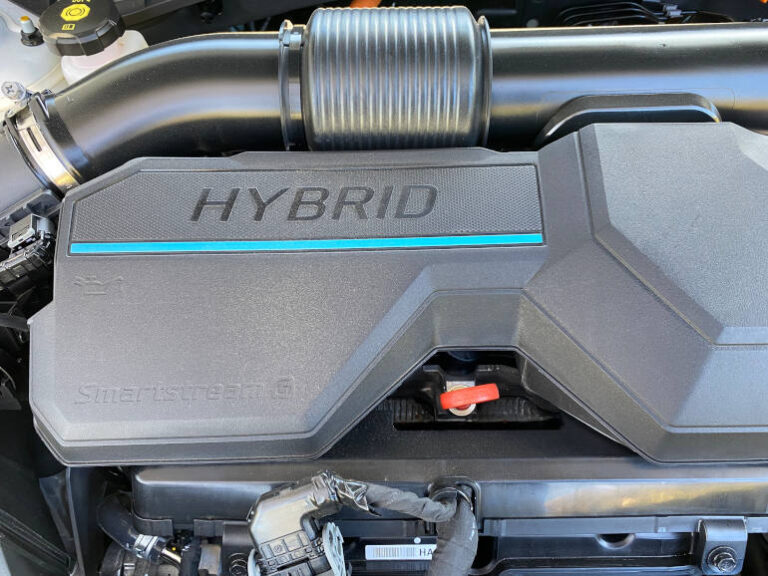Hyundai Australia says it is seeing growth in its fleet sales figures despite a softening in the number of retail sales registered.
The brand has just launched a new petrol-electric hybrid version of the Tucson midsize SUV – a model that is expected to appeal to a broad mix of buyers, including small and large businesses thanks to its new lower-emitting, more efficient powertrain.
Hyundai Australia chief operating officer, John Kett, said that fleet hasn’t been as strong a performer in the current range, but he intimated that he expects the new version to make up some ground there, in a market where he sees fleet sales over-indexing compared with private sales.
“If you look at our mix in the run-out Tucson over the last 12 months, we haven’t actually had a high penetration of entry level petrols – that price-sensitive points for fleet,” Mr Kett said.
“I think our business always around to around 20 percent fleet, and I can’t see this car being any different. I think it’ll just find its way.”
However, the cost could be a consideration as to whether buyers opt for the so-called Smartstream G2.0 MPi two-litre petrol four-cylinder model (8.1 litres per 100km, 184g/km CO2), or the more fuel-efficient Smartstream G1.6 T-GDi Hybrid – a 1.6L four-cylinder turbo-petrol hybrid (5.3 litres per 100km, 121g/km CO2).
Prices have increased across the board, but at the base – fleet-friendly – level, the hybrid models attract a $6000 premium over the base petrol, with the entry-level Tucson 2.0L FWD listing at $39,100 plus on-roads, and the 1.6T hybrid FWD from $45,100 plus on-roads.
Mr Kett commented on the pricing of the new range, which has been positioned to leave some space below it for the expanded Kona range – which itself has hybrid as an option, as well as a fully-electric version, and petrol models, as well.
“I think for us, we see the sentiment in the market more in our shift of trim mix,” he said.
“We think about four levels of cars: entry, mid, third-level and high-level. We’re seeing a shift back towards the entry price-point trims, as you would expect, and certainly we’re seeing fleet grow faster than retail, as you would expect because fleet has been out of the market for about three years given COVID,” Mr Kett said.
“So I think the customers are telling us by the trim lines that they’re moving towards, their preference for being more discerning around the price points of our vehicles,” Mr Kett said, referring to the ongoing cost-of-living considerations that fleet and private buyers are dealing with.
“We know we’ve got a really good model offering, or trim offering, and we’ll get a sense of what works best,” he said.
The Tucson line-up now covers a mix of 17 derivatives, with five different powertrain choices on offer – none of them plug-in hybrid or fully electric.
The base engine is the aforementioned 2.0L petrol, which has a six-speed auto and is front-wheel drive only. Up from there is the 1.6-litre four-cylinder turbo petrol, which is more of a performance-oriented unit which comes standard with a seven-speed dual-clutch auto and the choice of front- or all-wheel drive, depending on the variant/trim line.
And then there’s the new hybrid, which is also a 1.6-litre turbo-petrol supplemented by a 37.4kW/264Nm electric motor which is integrated into the six-speed automatic gearbox. It is fed by a 1.49kWh lithium-ion battery pack mounted below the rear seats. The hybrid version is available with front- or all-wheel-drive, depending on the grade, and both drivelines have the same 5.3L/100km fuel use claim.
The facelifted Tucson sees a number of changes to its exterior and interior design, and in a plus for fleet managers, the brand has also introduced a “fix” for its annoying audible speed sign warning system (which, for the unaware, will beep every time the car’s cameras think they’ve seen a new speed sign, or the car’s navigation thinks the speed limit has changed).
While the audible warning tech wasn’t available on pre-update Tucson (it had a speed sign display only), it has drawn the ire of customers and reviewers alike, largely as it is an insistent and incessant accompaniment, and can get it wrong a lot, too. For instance, it will pick up and warn you of school zones, even on a Sunday night at 10pm.
However, new Tucson drivers who don’t appreciate that level of nannying can now shortcut having to jump through a series of on-screen menus to disable the tech by simply holding the mute button on the steering wheel for five seconds, but has to be done every time you restart the car.






